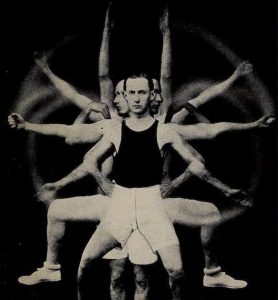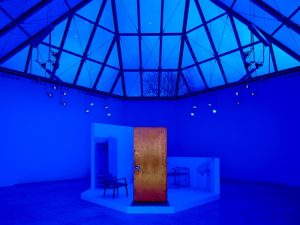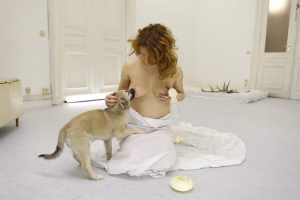(written by manekineko)
I’ve been occasionally reading online articles on the Japanese geek subculture. For example, Washington Post had an excellent piece titled “In Tokyo, Ghetto of Geeks” by Anthony Faiola last year.
Faiola’s article is dated June 7, 2005. Since then, it appears that the geek subculture is increasingly influencing the mainstream media and culture. The movie, Densha Otoko, for example, is based on a heartwarming and somewhat awkward love story of a 22 year old system engineer who lives with his parents and haven’t dated anyone for 22 years. Fuji TV also aired a TV series Densha Otoko last year.
If you visit the Densha Otoko website, you see what many consider a typical Akiba-Kei fashion, a look that is generally believed to repel most girls (the word Akiba comes from Akihabara, the “geek ghetto” district in Tokyo). Here’s some photos of Akiba-kei Fashion. (Mind you, a backpack is interpreted as a sign of geeks.)

[What I might view as an Akiba-kei Fashion archetype. It’s a question how much this is different from how I look.]
However, I have a feeling that the mainstream media are playfully tinkering the meaning of Akiba-Kei Fashion – and at the same time, some geeks seem to be experimenting with so-called post-geek fashion, looking for a new definition of coolness. There’s even a new book, titled “Post Geek Fashion Guide,” which gives rather detailed instructions for dressing and looking cool.

[The cover of the book Post Geek Fashion Guide.]
Now that they are sometimes called “A-Boys” (Akiba-kei Boys, reminiscent of the B-Boys of the hip hop culture), we may hear more girls say something like: “I think they [Akiba-kei geeks] are kind of creepy but I’m strangely attracted to them.” There are geek girls in Akihabara too, but boys apparently outnumber girls.
Following the discussions on Moe, a key concept for understanding the psychology and the social forces driving the geek culture, I came to think that this geek-focused phenomena are not so detached from the traditional culture and the “normal” Japanese in the society.
Here’s a pointer to a related Otaku-themed art installation at Biennale di Venezia 2004, in which the artists juxtapose Wabi, Sabi, and Moe. Some argue that Wabi-Sabi, a traditional Japanese world view or aesthetic and Moe, a geek jargon for a deep positive feeling about people or things, are all based on a cultural system around Mitate (an act of creative interpretation – for example, one sees a stone in a Japanese garden as an island or a plastic anime figure as an ideal partner).
If one could have a Moe feeling for Cosplay girls at Maid Cafes in Akihabara or GothLoli girls in Harajuku, that can make an interesting situation. (…But will any of these urban tribes be early adapters for wearable fashion or go as far as “A-Borgs” with implants? )

[GothLoli girls. Screenshot form video Hanamaru Cafe – Gothic and Lolita]







